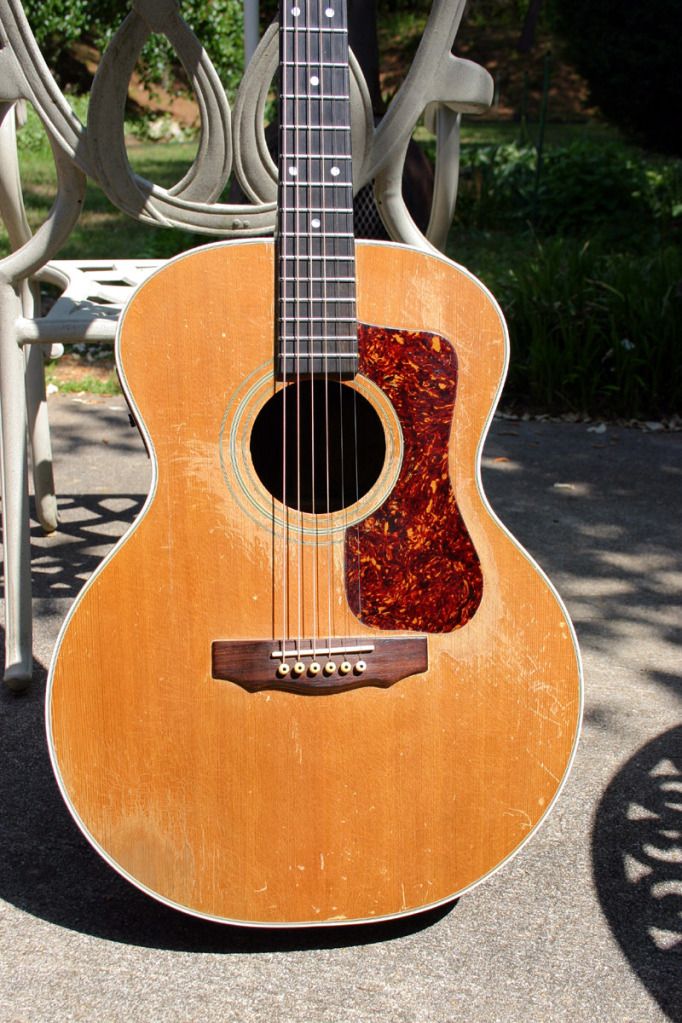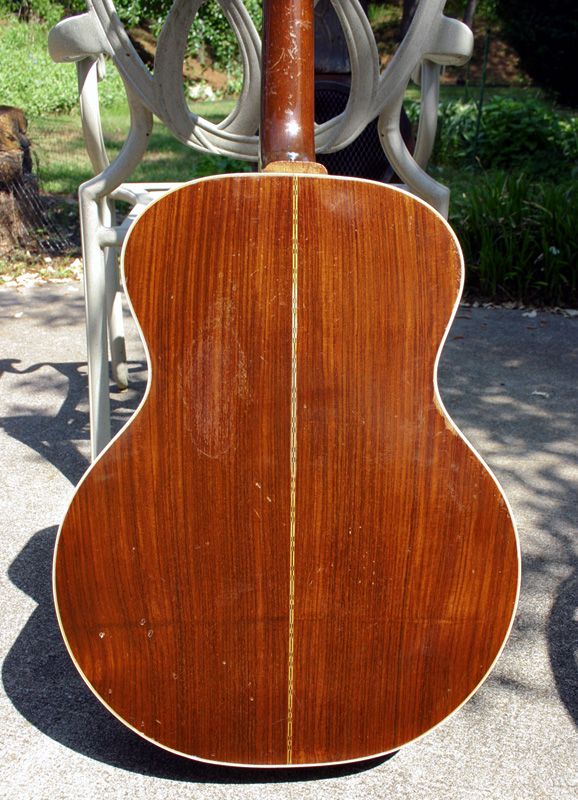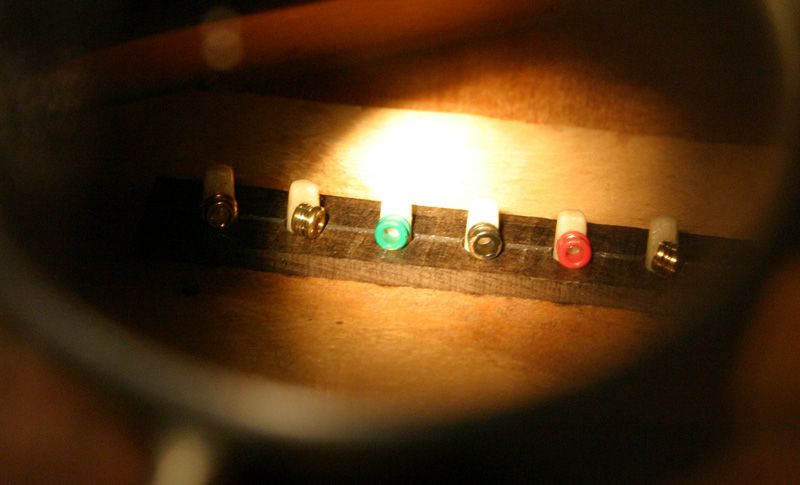DCannon
Member
I haven't played my '72 F-30R in a LONG, LONG time because I felt that the nut/neck width was just too small for my aging hands. But I pulled it out today, got it in tune (DADGAD) and WOW!!... my old friend that I did the majority of my touring with back in the 70s and 80s sounds better than any guitar I own. Lots of mojo, aged, beat to death and well broken-in, and still sounds amazing. It has some issues but I was so inspired, I decided to do some work on it and get it back in playing condition. I reset the neck back in the '80s, installed a new ebony fretboard and bridge and the setup is still excellent with no buzzing. But the pin holes in the bridge plate had been eaten away by the ball ends over time, allowing the string windings to extend into the saddle (another reason I stopped playing it), so I made a new secondary plate today out of ebony, got it installed and all is well. I had an old Baggs LB-6 pickup in it with onboard EQ that I installed on the side, but the pickup no longer worked, so I removed it all except the EQ plate on the side since I had to cut four small slots into the side for the sliders. The plate will be fine until I can find time to fill the slots with pieces of rosewood and smooth it all out. The heel plate is missing, so I'll make a new one soon. But it's playing great and what a wonderful tone!! I'll force myself to get used to the smaller nut width than what I've become accustomed to in my newer guitars (1-3/4). This guitar has seen a LOT of miles and venues in every state and throughout Canada, and it's not over yet!



DC



DC
Last edited:

